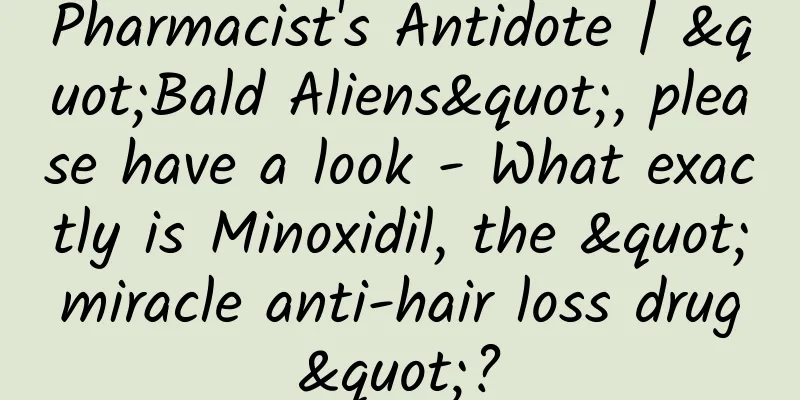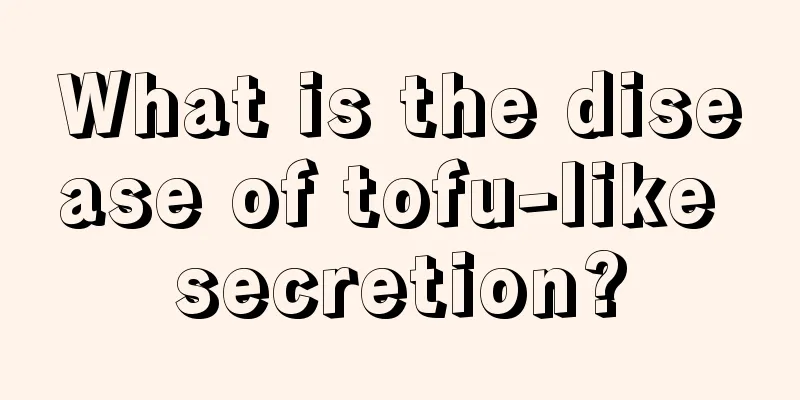Pharmacist's Antidote | "Bald Aliens", please have a look - What exactly is Minoxidil, the "miracle anti-hair loss drug"?

|
Time is not only a butcher's knife, but also a hair loss cream, which makes us bald but does not give us a way out. According to the data of the National Health Commission in 2019, more than 250 million people in my country are suffering from hair loss, and one in every six people has hair loss. Under the heavy pressure of work and life, more and more young people have fallen into the abyss of hair loss. Hair loss has become an increasingly serious social problem. So, can we just sit and wait for it to fall off? In recent years, a topical preparation called minoxidil has been enthusiastically sought after by young people and is known as the "magic drug to prevent hair loss." What exactly is minoxidil topical preparation? Is it really helpful in treating hair loss? The "anti-hair loss magic drug" that unexpectedly hits the mark Minoxidil was originally developed as an antihypertensive drug, but it was found to have a special adverse reaction during clinical application - hirsutism. This characteristic of minoxidil has brought hope to countless "bald people". In 1987, the U.S. Food and Drug Administration (FDA) approved the marketing of 2% minoxidil topical preparations for the treatment of male hair loss. Since then, minoxidil topical preparations have become a "miracle drug for preventing hair loss". There are currently three main types of minoxidil topical preparations on the market: liquid, foam, and gel. The exact mechanism of minoxidil topical preparations in treating hair loss is still unclear. Current research suggests that it may improve hair growth through the following mechanisms: increasing the duration of the hair follicle growth phase, enlarging shrunken hair follicles, and promoting blood circulation in the scalp. Suitable for various types of hair loss Many people have questions in their minds: Are there more ways to deal with hair loss? Of course! Clinically, minoxidil topical preparations can be used for common types of hair loss such as androgenic alopecia and alopecia areata. You may be a little confused, so I will continue to explain it to you. Androgenic alopecia is also known as seborrheic alopecia, which is characterized by atrophy of hair follicles, thinning and shrinking of hair, and even necrosis and loss of hair follicles. Alopecia areata, commonly known as "alopecia areata", is characterized by the presence of single or multiple hair loss patches with clear boundaries. Pay attention to these matters when using 1 Different concentrations, different target groups Minoxidil topical preparations are available in two concentrations: 2% and 5%. Generally speaking, the 5% concentration is recommended for men, while the 2% concentration is recommended for women. 2 Usage and dosage are particular Minoxidil topical preparation is applied twice a day, 1 ml each time. The medication must be used continuously, and it is recommended to use it continuously for half a year to more than one year, with an effective rate of 50%-85%. 3 A "shedding phase" may occur in the early stages of treatment This phenomenon usually occurs 2 to 6 weeks after starting treatment and disappears within a few weeks. It is normal and is a sign that the drug is beginning to work. 4 Common adverse reactions include skin irritation In general, the incidence of adverse reactions to minoxidil topical preparations is low and the symptoms are mild. Mild dermatitis, desquamation, itching, etc. are common on the scalp, which will gradually subside after stopping the medication. Although drugs are effective in preventing hair loss, if you do not develop good living habits, stay up late every day, and feel depressed, no matter how good the "anti-hair loss magic drug" is, it will not save your hair. |
<<: What is it like to have hemorrhoids? Please keep this Chrysanthemum Guide!
>>: If you have these five symptoms, be sure to be alert to the symptoms of sinusitis!
Recommend
Menstrual cycles become shorter after age 45
We know that after girls enter menopause, their m...
Can I dye my hair when I'm pregnant?
Pregnant women should try not to dye their hair d...
Does having an abortion two months into pregnancy affect your health?
In modern society, early pregnancies occur freque...
Frequent urination and urgency during menstruation
Menstruation is a very special physiological peri...
Formation and treatment of uterine fibroids
Uterine fibroids are the most common malignant tu...
What is the normal blood sugar level for pregnant women?
The normal blood sugar value is between 3.9 and 6...
What to eat during menstrual cycle
Many women do not eat during their menstrual peri...
The latest research from USTC: Delaying aging starts with saving mitochondria!
Mitochondrion is a semi-autonomous organelle pres...
Tuberculosis: A close encounter with the "white ghost"
There is a disease around us called "white g...
My stomach hurts when my due date is approaching. What's going on?
The more advanced the pregnancy is, the more nerv...
Is ovulation pain caused by blocked fallopian tubes?
Many women will find pain during ovulation. At th...
Side effects of taking painkillers during menstruation
Menstrual pain is a major problem that modern wom...
How to deal with mastitis during the confinement period
During the confinement period, if mastitis occurs...
Reasons for green leucorrhea in late pregnancy
Normally, abnormal leucorrhea is enough to make f...









